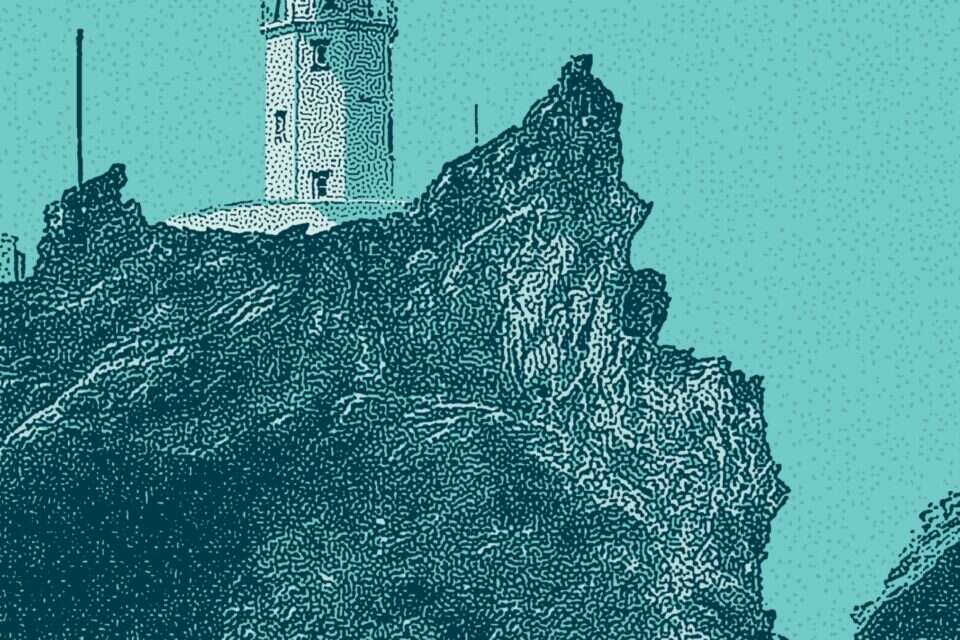Among the great works of the great writer Jules Verne is also the adventure novel "The Lighthouse at the End of the World", which was inspired by a small lighthouse located somewhere on the edge of Patagonia.
I read it as a child, and the last thing I could imagine in the face of such vivid descriptions of Estados Island is that Warren had never visited Argentina, nor seen the lighthouse - the hero of the novel.
The Spanish artist Jose Luis Gonzalez Macias, author of "The Short Atlas of the Lighthouses of the End of the World", already admits in the book's preface that, like the French literary genius, he has not been to any of the remote and isolated places that emerge from the pages of the book, and he has not seen with his own eyes any of the 34 lighthouses from around The globe that stars in it.
Despite this, he allowed himself to treat them as if they were old acquaintances, friends whose lives and traits were fully exposed to him.
Messias instills this feeling in the readers as well.
Miraculously, they too will forget that the real lighthouse closest to their home is somewhere hundreds of kilometers away, and will suddenly feel "the storm hitting the windows, the isolation that appears after the storms and the loneliness lurking in the mists".
embodied an impossible alliance
Despite the name, "The Short Atlas of Lighthouses of the End of the World" is not exactly an atlas.
It is an interdisciplinary and indefinable combination of fascinating stories (all true, the author swears), technical features, eye-popping illustrations and navigation maps, as if intended to prove that all these lighthouses are not figments of imagination but real giants, signs of the end of the world as well as the end of time , as they are disappearing from the landscape.
Actually, maybe the rapid extinction actually does them good.
"Rare" means "valuable", an expert in applied economics once said, and nimble entrepreneurs who are turning the abandoned lighthouses that still remain into spectacular B&Bs probably agree with him.
But even if we leave economics aside, there are few concepts that evoke an uncontrollable burst of romanticism like lighthouses, so much so that even "normal" monuments would like to dress up as lighthouses and bask in their glory (did you know, for example, that the famous Statue of Liberty in New York was a lighthouse until 1902? ).
Messias' book thickens the aura of romanticism, and provides alongside it a lot of food for thought about how the lighthouses served as a reflection of the reality that surrounded them.
For example, the Wenwei Zhou Lighthouse near Hong Kong came into being as an unplanned result of cooperation between apparent rivals - the British Empire and the Chinese Qing Dynasty.
In the 1840s, as we know, the British and the Chinese fought the first Opium War, but after the British victory, with the increase in maritime trade in the region, the need arose to illuminate the dangerous waters in the South China Sea not far from the coast of Hong Kong.
Alas, only the Wanshan Islands, a group of a hundred small islands and thousands of other island shards, were suitable for the task - and they actually belonged to the Qing Empire.
The two governments were forced to forget the sediments of the recent past and agree between them the outline of the construction and maintenance of the lighthouses, which were scattered throughout the islands.
Apparently, the officials on both sides intended only practical arrangements, but gave birth - without planning it in advance - to a strange practice, unmatched anywhere else.
Since the construction of the lighthouses, the lighthouse keepers have literally embodied in their flesh the impossible alliance between yesterday's enemies: they were all supposed to be Eurasian in origin, Messias claims, usually the sons of British fathers and Chinese mothers.
When Messias was working on the Atlas, he could not have known that a full-scale war would be waged around another beacon that struck him.
Adziogol Lighthouse is located in a place far from civilization, embedded in golden dunes, salt flats and coniferous forests.
According to Herodotus, this is where the Amazons settled, but nowadays this area of the Dnieper river mouth is the front line between the invading Russian army and the defending and repulsed Ukrainian army.
In these two countries there is no lack of "mixed people" whose parents are Russian and the other Ukrainian, but it is highly doubtful whether the recipe from Hong Kong can work where the Dnieper joins the Black Sea.
At least not now.
By the way, this is not only the tallest lighthouse in Ukraine and one of the tallest in the world, but an architectural wonder.
Adziogol was built between 1908 and 1911, and the light that was turned on when the construction was completed has not been extinguished to this day.
Without it, even a small boat would have difficulty navigating the maze of small river islands and canals added over time to the river.
Masias says that the engineer Vladimir Shokhov, the father of the hyperboloid structures and the designer of Adziugol, imitated in his architectural plan the work of the Ukrainian women who were engaged in spinning the Heustaka threads.
The huge tower, which actually resembles a woven basket, looks so thin that when you first see it, you are sure that it will collapse with a slight breeze.
This is of course an optical error.
Despite the paucity of material (if they had built the Eiffel Tower using a hyperboloid structure similar to the Adziugole, the symbol of Paris would have weighed only a third of its actual weight, Masias marvels), Shokhov's calculations are as valid more than 100 years later as they were at the beginning of the 20th century.
He probably did not know how to calculate and anticipate the war and its movements, and it remains only to hope that a stray shell will not destroy the tower, and that Shamsias and his readers will have the chance to see the wonder not only in Atlas.
Gonzalez Macias / The Short Atlas of Lighthouses at the End of the World; From Spanish: Yoram Meltzer, Pardes, 158 p.
were we wrong
We will fix it!
If you found an error in the article, we would appreciate it if you shared it with us









